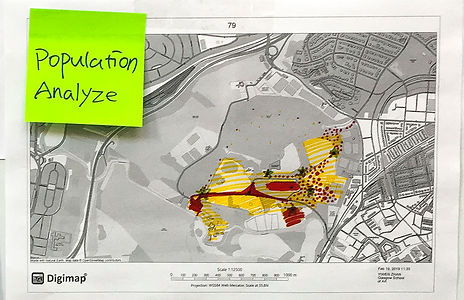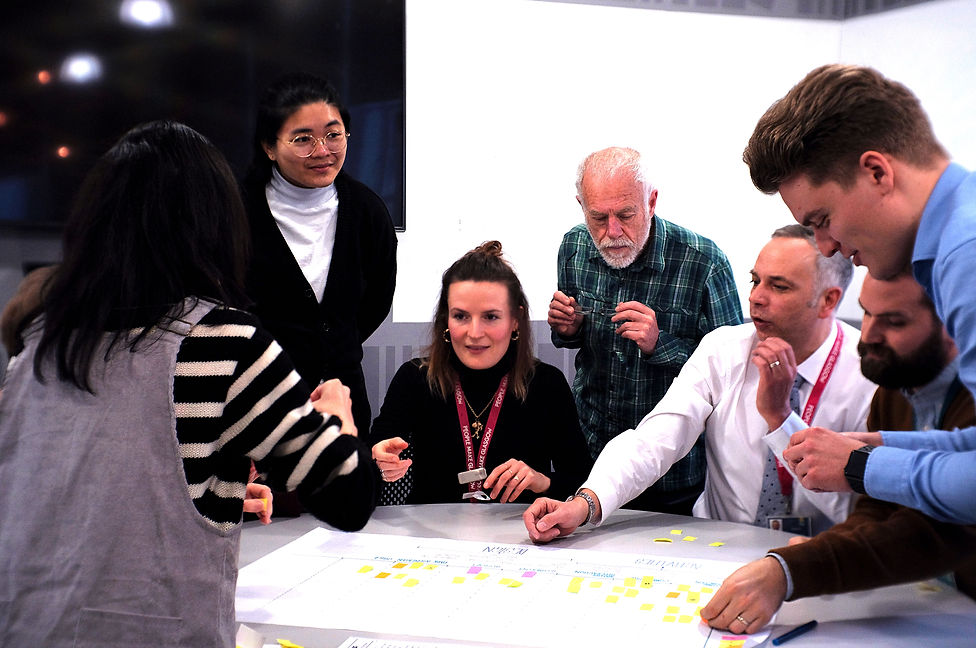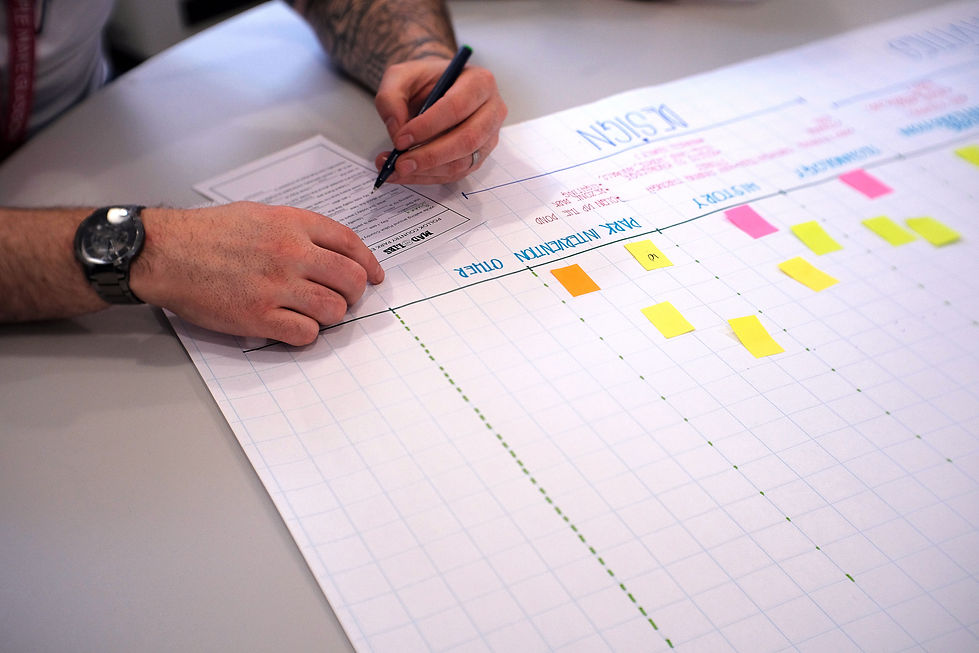CHILDREN'S BOOK
FRANCESCA FOX
My final year honours project was dedicated to writing and illustrating the children’s book, Francesca Fox. This project allowed me to explore narratives and themes, create engaging visuals and use humor to appeal to a younger audience. My children’s book conveys an educational message of overcoming social pressure and learning the importance of individuality.
The imagery is intended to appeal to youth while the commentary empowers and informs children on contemporary issues of identity and acceptance.
Illustration, Visual Layout, Writing, Editing, Character Design, Storyboarding

Pollok Country Park
The Problem
This research was conducted in Glasgow, Scotland and focused on Glasgow’s largest parks, Pollok Country Park.
While working collaboratively with architects, landscape designers and city planners, my team’s goal was to enhance visitor experience through innovative practices that parks around the world are currently experimenting with and to present a new element that has yet to be introduced.
Timeline
12 weeks
Key Goals
-
Improving the management and care of the park’s heritage assets;
-
Supporting a visitor’s integrated day out in the park, removing barriers to access;
-
Increasing usage by the communities surrounding the park;
-
Improving orientation of the attractions within the park.
My Role
This project consisted of 5 team members. My role involved conducting stakeholder interviews, research and developing sketches, storyboards, and prototypes.
Research
Our group travelled to Pollok Park to fully emerge ourselves in the experience and to assess the current wayfinding system. We identified four main categories that we considered important for our team to address:
-
Existing Infrastructure: consider where people are navigating due to what the park currently offers. i.e. playground, dog walking areas, sport areas, etc.
-
Current Wayfinding: the current wayfinding system is difficult to notice as the wooden posts blend into their surroundings too cohesively.
-
Potential Land Use: Consider if there are open areas that are currently underutilized in which our group can add interactive activities or other design elements
-
Current User-group: assess the main demographic currently attending the park and why. Consider how our design can reach a larger demographic


Findings
During our time at the park, we were able to extract that the majority of visitors were situated in the east as many visitors were walking their dog or at the playground with their children. From these findings, our group agreed it was important to push visitors to explore outside of the eastern area. This research influenced our design process as we began to investigate seasonal zoning and allocating activities to different areas of the park, thus encouraging visitors to move throughout the space in a new way.
Interviews & Public Engagement
During a stakeholder engagement session, our group collaborated with the Glasgow City Council, Glasgow Life and other stakeholders including architects, landscape designers and city planners.
This engagement session was designed to co-develop innovative design interventions and strategies centered around improving the management and care of the park’s heritage assets, supporting a visitor’s integrated day out in the park, removing barriers to access, increasing usage by the communities surrounding the park and improved orientation of the attractions within the park.
Our group developed two games for the stakeholders to participate and generate ideas with.

Game one
Using Pollok Park “cash” that we provided, each player spent their money on the different categories where they would like to see their money invested. Through our desk research, stakeholder engagement and park visits, our group compartmentalized our potential orientation expansion and re-development ideas into two categories: Activities and Design.
In the Activities categories, players had the option to spend their money on:
-
Cultural Attractions: sculptures, gardens, concerts and farmer markets.
-
Commercial Space: Kiosks and rentable space for weddings.
-
Nature Interactions: bee keeping, informational nature walks (e.g. mushrooms, birds, berries, etc.)
In the Design categories, players had the option to spend their money on:
-
Technology: wayfinding through technology, tech signage and mobile app design
-
History: wayfinding through storytelling, access to knowledge (e.g. Pollok House, Burrell Collection and the Maxwell family, etc.)
-
Park Interventions: initiatives such as cleaning up the pond, rezoning the park, introducing more lighting
The outcome: After tallying up the results, there were three categories that the majority of players invested their money into: cultural attractions, nature interactions and park interventions.

Game two
Drawing on the popular game of Mad Libs, our group developed a Pollok Country Park Edition. We developed a script that pertained strictly to the Pollok Park location in which players could design their day at the park, whether it was fictional or nonfictional. By removing the nouns, adjectives and verbs, players could input whatever came to their minds!
The Purpose: The intent of this game was to get the player to be creative and develop expansion options that we had yet to consider. Due to the structure of our last game, we decided it would be best to hand over more control to the player to generate new ideas.
The outcome: Although the players had fun creating their storylines, unfortunately the feedback did not generate the new ideas we were
looking for. A lot of the ideas related back to the topics discussed in Game 1 or included stories regarding existing infrastructure such as the Burrell Collection and Pollok House.
Solution
Our group designed a system that we believed incorporated main elements of the brief such as improved signage and wayfinding, encouraging visitors to explore areas off the beaten track and how a digital layer could benefit the visitors’ experience.

User Experience
Robert enters Pollok Country Park and is introduced to the first Experience Hub. If interested, Robert will create a profile by providing his name and fingerprint. The fingerprint acts as a quick sign in opportunity once Robert encounters the next Tech Hub. Robert is now signed into the park and will be able to engage in the environment in a new and exciting way!
Pollok Country Park has 20 Experience Hubs for Robert to find and interact with. The hubs will provide information depending on where he is situated in the park. For example, if Robert travelled to the Burrell Collection, he will login to the hub and receive information regarding the Medieval treasures, French artists and Chinese porcelain found inside!
It is intended that Robert explore Pollok Country Park at his own intuition, without knowing where each hub is located. This allows Robert to enjoy the areas of the park he intended to visit, while being intrigued and motivated to engage with new areas that he does not usually visit.
Upon leaving the park, Robert signs out of the Experience Hubs and receives a printed map as a souvenir of his journey. The printed map indicates that Robert found 10 of the 20 Experience Hubs located in the park.


Tablet Design
-
When entering the park, the visitor will log in to the first hub to create a profile providing their name and finger print.
-
The visitor will be encouraged to explore the park based on the own intuition.
-
The visitor will sign out of the Hub and will receive a printed map of their journey.
Mobile Design
The visitor will receive a push notification, asking if they would like to
learn more about each location they visit during their time at the park. The visitor will have the option to accept or decline. The visitor will still be encouraged to participate with the Experience Hubs and will scan a barcode that appears on their phone once they arrive at a hub. The will receive information on the Burrell Collection, the Pollok House and more, thus developing a park story unique to each visit. The mobile friendly
users will also receive a printed map when they sign out of the Experience Hub as well as receive access to a digital version on the phone in which the visitor can share with their friends and family via social media. This system is intended to be used for future developments of Glasgow parks where visitors can log into any park, track
their visit and share it with friends and family.

Data Collection & Seasonal Zoning
The Tech Hubs will be able to track the routes each visitor takes based on which hubs they are logging into. Using this qualitative research, Pollok Country Park can assess how visitors are currently interacting with the environment and see if there are more common routes taken than others. This will help create implementation strategies for future development of the park.
Lastly, seasonal zoning was something we believed was an important element to keep in the design proposal. We split the park into two sections and suggested visitors can be directed to either sides to ensure the park has a recovery period if there is a high volume of users. The Tech Hubs could support this navigation as they could be programmed
seasonally to help direct visitors.


